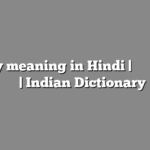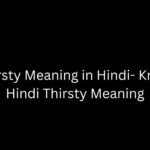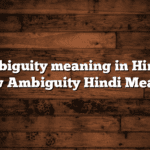Hindi philosophy is deeply intertwined with ancient Indian scriptures and spiritual traditions that date back thousands of years. This rich philosophical framework offers profound insights into the essential nature of life, existence and what it means to live meaningfully. By exploring key Hindi philosophical concepts around the self, righteous living, material balance, liberation, as well as devotion and unity with the Divine, we can gain timeless wisdom to navigate life’s journey with clarity and higher purpose. In this article we talk about What wisdom does Hindi philosophy offer about life.
Table of Contents
Understanding the True Self – Atman and Brahman
A core tenet of Hindi philosophy that shapes its understanding of life is the differentiation between one’s True Self or soul called the Atman and the physical identity tied to our mind and body that dies. The Atman is believed to be eternal, unchanging and intrinsically connected to the supreme reality Brahman. Vedantic philosophy in Hinduism states that Brahman is the all-pervading, infinite divine ground of existence. To realize one’s True Self as the Atman is to realize that it is intrinsically one with Brahman – the sublime Universal essence. This powerful unity is encapsulated by the Mahavakya (Great Saying) “Tat Tvam Asi”, meaning “You Are That”.
The realization that one’s True Self reincarnates over many lifetimes and is fundamentally connected to the Divine leads to the state of Moksha or liberation from the cycle of death and rebirth. Therefore, the ultimate goal of life in Hindi philosophy is to self-realize the Atman, transcend a narrow ego-bound identity and attain spiritual freedom.
A Framework For Righteous Living – The Four Purusharthas
To guide aspirants in living ethically and in alignment with the highest truth, Hindi philosophy articulates four Purusharthas or aims of existence. These four goals provide a holistic framework to lead a balanced, purposeful life.
The first Purushartha, Dharma, refers to living life according to one’s ethical duties, moral principles and righteousness. Fulfilling one’s Dharma contributes to universal harmony. The second goal Artha focuses on the attainment of material prosperity and resources to support one’s journey. While aspirants are urged to seek financial stability, it should not be at the cost of violating moral principles.
Kama refers to pursuing pleasurable experiences, relationships and enjoyment in life while keeping such pursuits moderate and not hedonistic. Finally, Moksha involves spiritual liberation from worldly suffering and realization of the True Self’s sacred connection with the Divine. Within this comprehensive framework for righteous living, the four goals provide evolutionary steps to fulfill one’s highest potential.
The Transformational Path of Yoga and Self-Discipline
The pursuit of self-realization and spiritual growth in Hindi philosophy is closely tied to the ancient practice of Yoga. Deriving from the Sanskrit root “Yuj” meaning to unite, Yoga comprises ethical principles, physical postures, breath regulation and meditation techniques to unite one’s consciousness with the Divine. By stilling the mental fluctuations, Yoga enables practitioners to achieve inner harmony, self-discipline and tranquility on the path to enlightenment.
The Yoga Sutras of Patanjali outline this integral eightfold path comprising of moral restraints, observances, postures, breath control, sensory withdrawal, concentration, meditative absorption and finally Samadhi – the state of unified consciousness and bliss. Through dedication to this transformative Yogic journey, an aspirant can overcome the ego-self’s illusions and attachments, realize the Divine within and attain freedom.
The Divine Wisdom of Poet-Saints and Devotional Paths
In addition to the philosophical schools of Vedanta and Yoga, teachings of poet-saints like Kabir, Tulsidas and Mirabai also form a vital part of Hindi spiritual literature. Through their devotional songs and verses, these saints reveal the path of Bhakti Yoga or pure love and devotion to the Divine in its manifold forms.
The 15th century mystic poet Kabir, through his simple yet profound dohas or couplets, emphasizes directly experiencing the Divine by transcending organized religion and empty rituals. His words highlight that the Divine permeates all of creation and shines within every individual soul.
The iconic 16th century saint-poet Tulsidas, renowned for his epic Ramcharitmanas based on the virtuous life of Sri Rama, advocates loving devotion to God and adherence to dharma. With unwavering faith in God, he assures aspirants that Divine Grace can overcome any adversity.
Mirabai, the 16th century mystic poet and Krishna devotee, composes passionate poems expressing the longing of a lover for the Beloved Divine. She exemplifies single-minded and fearless devotion toward the Infinite, willing even to defy social norms and expectations on her spiritual quest.
These saint-poets highlight Bhakti Yoga’s promise that Divine Love has the power to melt away all separation and is the surest pathway to redemption. By surrendering the ego-self’s narrow demands and absorbing the mind in Divine contemplation, an aspirant crosses the ocean of worldly sorrows to become one with the Supreme Reality.
The Principles of Karma and Dharma in Daily Living
At the practical level, Hindi philosophy emphasizes the principle of Karma or causality whereby actions have inevitable future consequences. Every thought, word and deed is said to generate positive or negative Karma, which forms tendencies (samskaras) that shape one’s destiny over lifetimes. Understanding Karma inspires individuals to heedfully perform good actions that uplift themselves and the world, while avoiding harm through unethical deeds.
The Bhagavad Gita explains that dutifully performing actions as service to the Divine, while renouncing egoistic motives and outcomes leads to the path of Karma Yoga. When action arises from duty, higher purpose and selfless service, it binds the individual soul to the liberating wisdom of the Supreme reality.
Allied to Karma is the principle of Dharma – living life according to righteous duties, moral values and virtue. Fulfilling one’s personal, social and universal Dharma in alignment with the cosmic order sustains balance and harmony. Through adherence to Karma Yoga and Dharma, an individual can achieve spiritual evolution while contributing to societal welfare.
Conclusion – Attaining Inner Peace and Purpose
The philosophical gems embodied in Hindu spiritual texts, schools of thought and teachings of saint-poets offer a wealth of transformative wisdom. For the seeker of inner peace, purpose and enlightened living, the principles of Vedanta, Yoga, Bhakti, Karma and Dharma provide illuminating guideposts. By treading the path of self-inquiry, devotion, selfless action and virtuous living, an aspirant progresses towards self-realization – recognizing one’s True Self as Divine and attaining supreme fulfillment. I sincerely hope you find this “What wisdom does Hindi philosophy offer about life?” article helpful.

Dr. Rajesh Sharma is a Hindi language expert with over 10 years of experience and a Ph.D. in Hindi Literature from Delhi University. He is dedicated to promoting the richness of Hindi through his well-researched articles on meaninginnhindi.com. Follow Dr. Sharma on Instagram @hindi_adhyapak, where he shares insights with his 121K followers.










